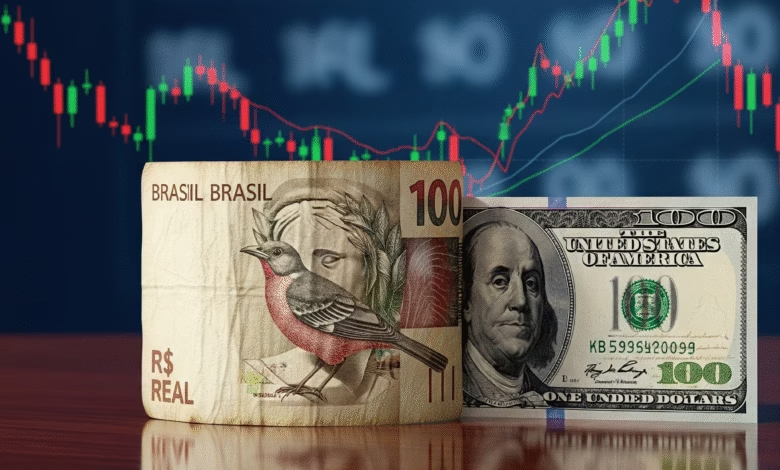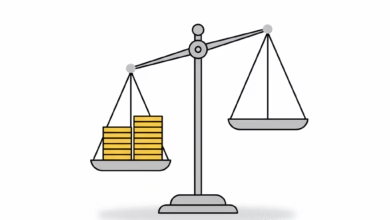The psychology of panic selling on the stock market
Understand how the human mind works behind panic selling on the stock market

It’s a feeling that every investor, from the novice to the seasoned pro, knows in their gut. You open your portfolio on a day the market is bleeding red. A 5% drop becomes 10%, then 15%. Your hard-earned money seems to be evaporating into thin air. Your heart starts to race, your palms get sweaty, and a single, primal thought screams in your mind: “Get out now before it all disappears!”
This overwhelming urge to sell everything in the middle of a market downturn is known as panic selling. It is not a rational, calculated investment decision. It is a powerful, emotional, and deeply human reaction—a financial fight-or-flight response. And it is, without a doubt, the single most destructive mistake an average investor can make.
But why do we do it? Why do carefully laid long-term plans crumble in the face of a few scary headlines? The answer lies not in financial textbooks, but in the ancient wiring of our own brains. This guide will explore the deep-seated psychological triggers that cause panic selling and provide you with actionable strategies to build the mental fortitude required to conquer your fear and protect your wealth.
Your Brain in a Bear Market: Understanding the Primal Response

To understand panic selling, you first have to understand that your brain is not naturally wired for modern stock market investing. For hundreds of thousands of years, our brains evolved to do one thing above all else: keep us alive in the face of immediate, physical threats.
When faced with a predator, our amygdala—the ancient, emotional part of our brain often called the “lizard brain”—takes over. It triggers the fight-or-flight response, flooding our bodies with adrenaline and cortisol. This process bypasses the slow, logical, and analytical part of our brain, the prefrontal cortex, because when a saber-toothed tiger is charging, there’s no time for a cost-benefit analysis. You need to react now.
A stock market crash is the modern equivalent of that charging predator. The flashing red numbers on the screen are perceived by our ancient brain not as a temporary fluctuation in the value of excellent businesses, but as a direct and immediate threat to our survival and security. Your lizard brain hijacks the controls, and its only command is to escape the danger—to sell.
The Pain of Loss: Why Losing Hurts More Than Winning Feels Good
The single most powerful psychological force fueling a panic sale is loss aversion. This Nobel Prize-winning concept, pioneered by psychologists Daniel Kahneman and Amos Tversky, revealed a profound quirk in human nature: the pain of a loss is roughly twice as powerful as the pleasure of an equivalent gain.
Losing $1,000 feels as awful as winning $2,000 feels good.
This emotional asymmetry is a killer in investing. When your portfolio is rising, it feels nice. When it’s falling, it feels absolutely agonizing. During a market downturn, the intense emotional pain of seeing your account balance drop triggers a desperate need to make the pain stop. The fastest and most obvious way to do that? Hit the sell button.
The act of selling provides immediate emotional relief. The threat is gone. The pain has been cauterized. Unfortunately, this short-term emotional comfort often comes at the cost of devastating long-term financial damage.
The Dangers of Following the Herd: Social Proof and Financial Panic
Humans are social creatures. For millennia, our safety and survival depended on sticking with the tribe. If everyone in your tribe suddenly started running, you didn’t stop to ask why; you ran, too. This instinct is still deeply embedded in us, and in finance, it’s known as herd mentality or social proof.
During a market sell-off, our herding instinct kicks into overdrive. We turn on the TV, and financial news channels flash sensational headlines like “MARKET IN FREEFALL” and “BILLIONS WIPED OUT.” We scroll through social media and see a chorus of fear and panic. Everyone around us seems to be selling.
Our brain interprets this as a powerful social cue: the herd is running, so we must run, too. Selling no longer feels like an independent decision but like the “safe” and “obvious” thing to do because it’s what everyone else is doing. This creates a terrifying feedback loop: selling begets more selling, driving prices even lower and amplifying the collective sense of panic. Resisting this urge feels like standing alone in the path of a stampede—it goes against every fiber of our social programming.
The Headline Effect: How Recent Events Cloud Our Judgment

Our brains are also wired to give far more weight to recent, vivid, and emotional events than to long-term, abstract data. This is a combination of two cognitive biases: recency bias and the availability heuristic.
- Recency Bias makes us believe that whatever is happening now will continue to happen in the future. After a week of falling prices, our brain starts to extrapolate that trend indefinitely, making us feel like the market will never recover.
- The Availability Heuristic makes us judge the likelihood of an event by how easily we can recall examples of it. Scary, dramatic headlines about market crashes are far more memorable and emotionally potent than boring charts showing decades of slow and steady growth.
When a crash happens, the vivid memory of the 2008 financial crisis or the 2020 COVID plunge is readily available in our minds. The fear associated with those events is re-activated, making the current situation feel catastrophic. We forget the decades of quiet, consistent growth that came before and the powerful recoveries that came after. All we can see is the immediate danger, amplified by a constant stream of negative news.
The True Cost of Panic: Locking in Losses and Missing the Rebound
Selling in a panic is a two-part mistake, and the second part is often more destructive than the first.
- You Turn a Paper Loss into a Real Loss: As long as you hold your investments, a market downturn is just a “paper loss”—a temporary fluctuation in value. The moment you sell, you lock in that loss and make it permanent. You’ve given up your ownership stake in those companies, and there is no longer any chance for them to recover their value within your portfolio.
- You Almost Certainly Miss the Best Days: This is the silent killer of returns. The stock market’s best days have a funny habit of happening immediately after its worst days. A study by Fidelity examined the S&P 500 from 1980 to 2020 and found that if an investor missed just the 10 best days in the market over that 40-year period, their total return would have been cut in half. Miss the 30 best days, and their return would be almost wiped out.
When you panic sell, you not only lock in your losses, but you also position yourself on the sidelines, terrified to get back in. By the time the market has clearly recovered and it “feels safe” to invest again, you have already missed the most powerful part of the rebound, permanently damaging your long-term wealth-building potential.
Actionable Strategies to Conquer Financial Panic and Stay the Course

Recognizing these psychological traps is the first step. Building a system to defeat them is how you win the inner game of investing.
1. Have a Written Investment Plan
This is your single greatest defense. Before a crisis hits, when you are calm and rational, create a formal Investment Policy Statement (IPS). This document should clearly outline your financial goals, your time horizon, your risk tolerance, and your target asset allocation. It is your financial constitution. When you feel the panic setting in, you can pull out this document and remind yourself of the long-term plan you made with your logical brain, not your lizard brain.
2. Zoom Out and Embrace Historical Perspective
When the short-term chart looks terrifying, zoom out. Look at a 50-year chart of the S&P 500. You will see the dot-com bubble, the 2008 crisis, the COVID crash, and a dozen other scary-looking dips. You will also see that every single one of them was eventually dwarfed by the long-term, relentless upward trend of the market. This simple act can provide powerful perspective and reframe a “catastrophe” as a “normal, temporary event.”
3. Automate Your Investing
The best way to take emotion out of the equation is to automate your decisions. Set up automatic contributions to your 401(k), IRA, or brokerage account every month or every payday. This strategy, known as dollar-cost averaging, forces you to adhere to the cardinal rule of investing: buy low. When the market is down and everyone else is panicking, your automated plan is calmly buying more shares at a discount.
4. Know What You Own
It’s much easier to panic sell a ticker symbol you don’t understand than it is to sell your ownership stake in a collection of the world’s most profitable and resilient businesses. If your portfolio consists of high-quality, diversified index funds or shares in companies with strong balance sheets and durable competitive advantages, you can have greater confidence in their ability to weather the storm.
5. Curate Your Information Diet
Stop marinating in financial fear. During a downturn, limit your exposure to sensationalist cable news and frantic social media chatter. Their business model is to sell clicks and viewership, and fear is a powerful sales tool. Schedule a weekly or monthly check-in on your portfolio instead of watching it minute-by-minute.
Winning the Battle Within

Ultimately, successful long-term investing is not a battle against the market; it’s a battle against yourself. Panic selling is a natural, deeply ingrained human response. There is no shame in feeling the fear. The key is not to act on it.
By understanding the psychological forces at play and implementing a disciplined, systematic approach, you can acknowledge the fear without succumbing to it. You can let your logical brain stay in the driver’s seat and guide your portfolio through the inevitable storms, emerging stronger on the other side.





